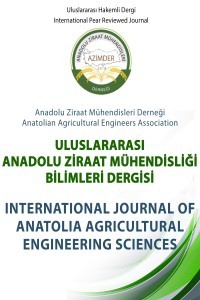
Uluslararası Anadolu Ziraat Mühendisliği Bilimleri Dergisi
Yazarlar: Şafak KARADAĞ, Mehmet Ufuk KASIM, Rezzan KASIM
Konular:Bahçe Bitkileri
Anahtar Kelimeler:Closed agriculture,Vertical farm,Climatization,Irrigation-nutrition,Artificial light
Özet: People have met their nutritional needs using different agricultural techniques for thousands of years. However, there has been a continuous increase in the need for food in parallel with the increase in the human population. In order to meet this increase, it is thought that there may be problems in food supply in the future, despite intensive agricultural production. Parallel to the increase in agricultural production, the use of existing resources to the limit, climate change, decrease in existing soil and water resources and increase in the use of pesticides threaten agricultural production. Sustainable agriculture techniques are used to reduce these threats, but dependence on nature and environmental conditions cannot be completely eliminated. Therefore, as a result of the search for a fully controlled production, a “closed plant production system” has emerged. In this system, production is carried out with multi-storey soilless farming technique in which all climate elements are precisely controlled in fully insulated structures without natural light. Plant nutrients and water are also given to plant roots through a closed circulation system. Thus, savings of nearly 90% are achieved in the use of water and fertilizers. Thus, as a completely sterile environment is provided, there is no need for pesticides and plant growth regulators. One of the most important reasons why closed plant production has not developed until today despite its many advantages is the high cost of lighting. However, today, with the development of LED technology, a lower cost illumination can be made and even higher photosynthesis and rapid growth of the plant can be achieved by using lights of different wavelengths.